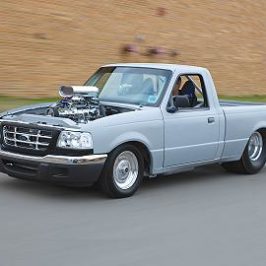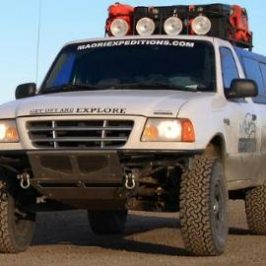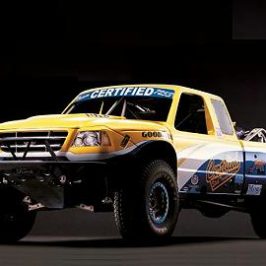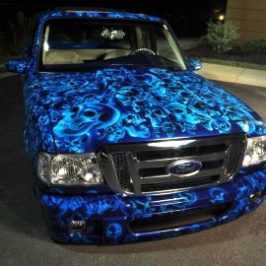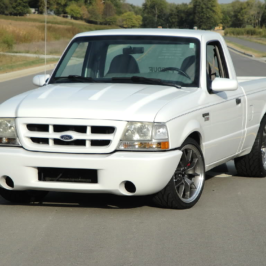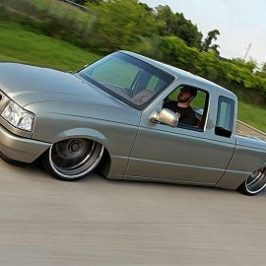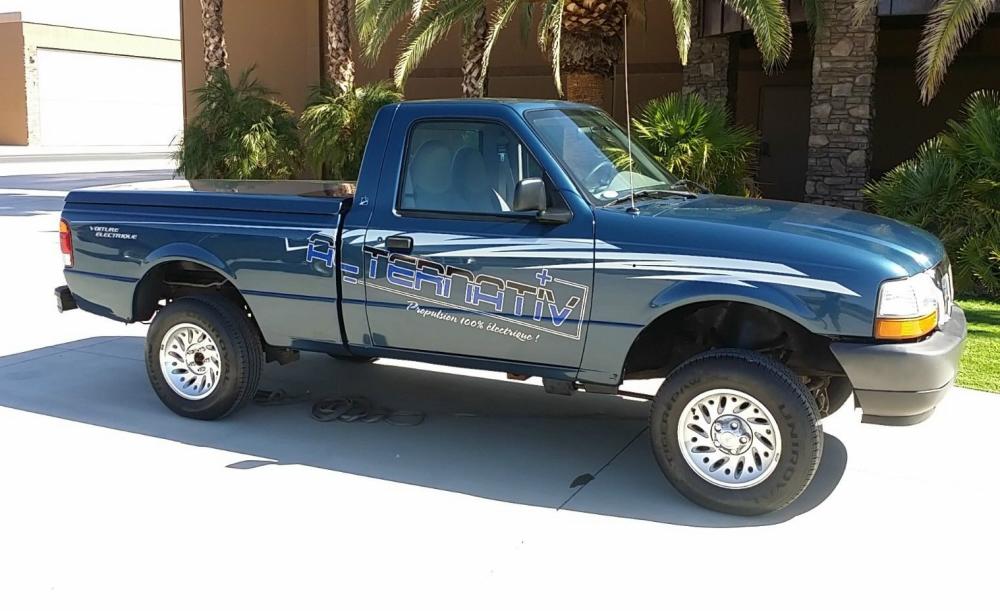
Remember the electric powered Ford Ranger?
The Ford Ranger EV (Electric Vehicle) is a battery electric vehicle that was produced by Ford. It was produced starting in the 1998 model year through 2002 and is no longer in production. It is built upon a light truck chassis used in the Ford Ranger. A few vehicles with lead-acid batteries were sold, but most units were leased for fleet use. A few persistent and interested private parties were able to obtain leases over a period of three to five years. All leases were terminated in 2003-04, and the vehicles were recalled.
I saw this one listed on ebay, and decided I would feature an electric powered Ford Ranger, so they’re not forgotten.
Exterior:
The principal identifiers of an electric Ranger are the appearance of the front charging door in a grille location that is open on ICE (Internal Combustion Engine) Rangers, the missing tailpipe, and the visibility of the EV’s unique rear suspension and the traction motor from behind the vehicle. From the side, the vehicle is almost indistinguishable from the ICE Ranger except for a modest script Electric on the side. Only the slight projection of the battery trays below the frame rails is noticeable at a distance. Vehicle height is close to that of four-wheel drive vehicles.
To improve aerodynamics, the bed was covered by a vinyl snap on cover supported by aluminum bows. Snap receivers slide within aluminum channels. A rear bow allows the tailgate to be opened without removing the cover. The cover can be quite difficult to re-snap under cold conditions due to shrinkage and stiffness of the vinyl material. As the bed was a carryover from the standard Ford Ranger body, some owners opted for after-market tonneau covers, such as hard fiberglass or roll-top.
Charging:
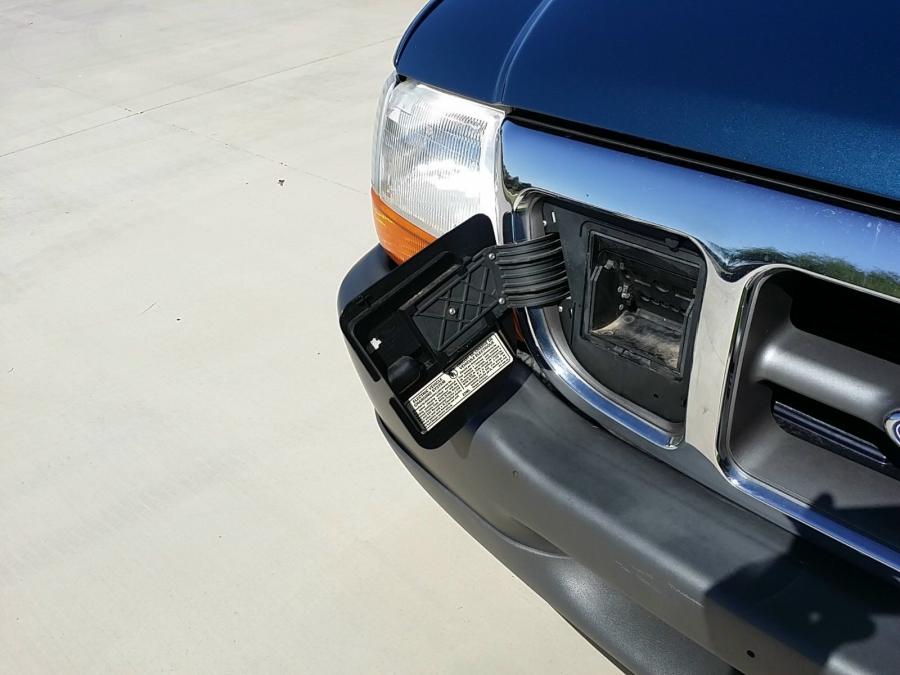
Charge door in grille distinguishes the EV from the front
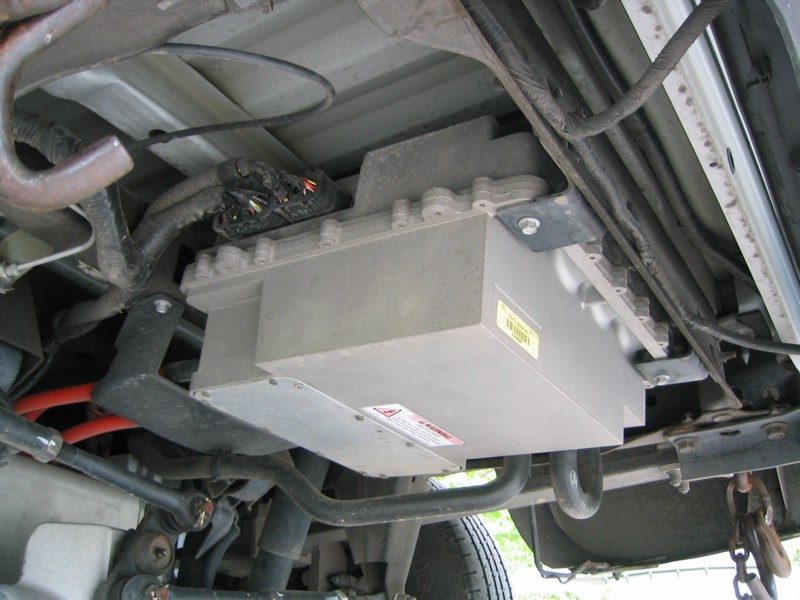
Power controller under bed at rear
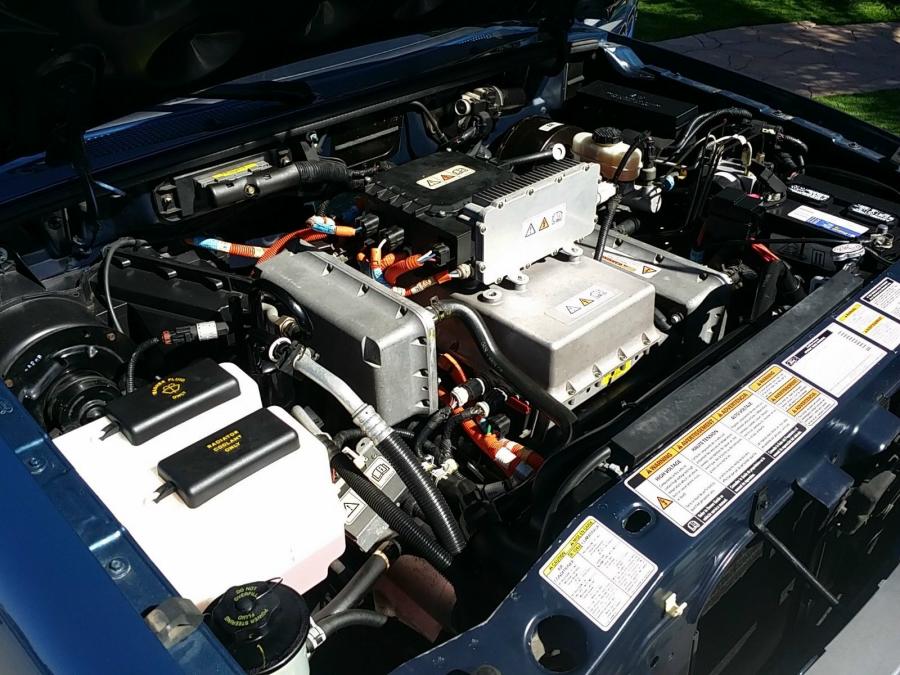
Charger
The front underhood compartment contains the charger, an electric air conditioner, the power steering mechanism, the power brake unit (otherwise conventional), a radiator for the air conditioner, and a vacuum pump and reservoir for the power brakes and a reservoir for the windshield washer. Charger and battery liquid cooling service is performed here but is not an owner-operator service item.
To the rear of the rear axle (the usual location for the spare tire) is the AC motor controller. The spare tire could be carried at a station within the truck bed. The spare tire is poorly located within the bed relative to its inefficient use of bed space. Many operators simply did not carry the spare.
Instrument Panel:
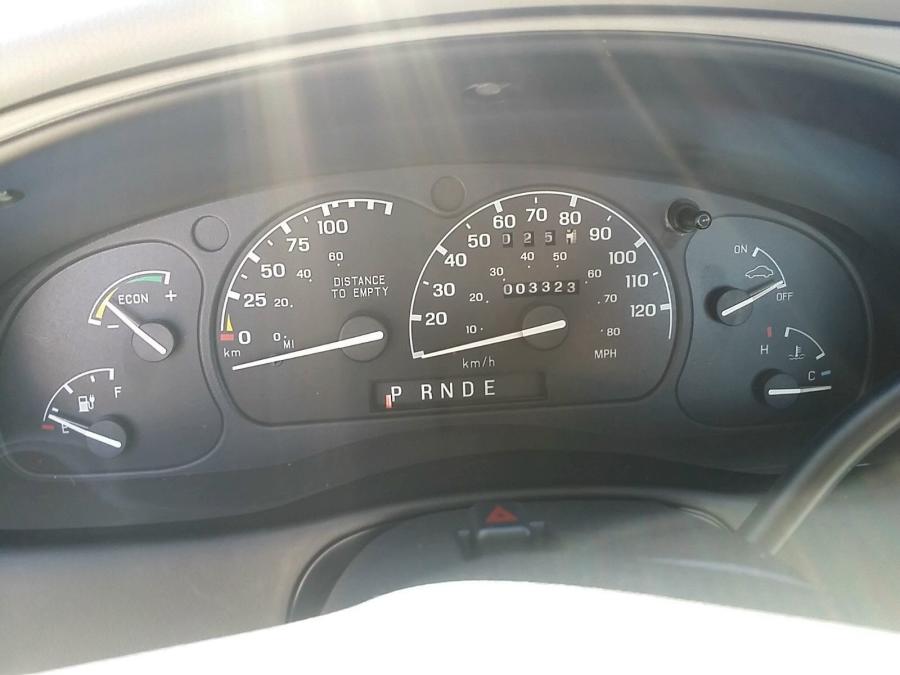
From left to right, the instruments are:
A charge indicator in the lower left corner, in the place of the normal fuel gauge. With underperforming batteries, cannot be relied upon owing to its tendency to decline from a full charge to about 3/4 and then suddenly drop to empty within a mile or two.
A rate indicator in the upper left corner, showing energy usage and recovery.
A miles to go indicator, replacing the tachometer. This indicator is also accurate only when the battery system is performing to specification, otherwise it may mislead the driver.
The usual speedometer and odometer.
At the upper right corner, an off-run electric gauge will come up to the run position in a few seconds after Start is commanded by a keyswitch turn. This does not indicate the pack voltage; it is only an indication to the driver that the vehicle is enabled.(has been started). The vehicle’s main contacts will not close until the pre-charge is complete.
At the lower right corner, a temperature gauge monitors the liquid coolant temperature.
Various indicator lights are included, one of which indicates that the truck is plugged in for charging. This is interlocked with the start circuit, disabling it if the Avcon paddle is inserted.
Controls:
Ford attempted to make the driving and operating experience as similar as possible to that experienced in an ICE vehicle with an automatic transmission. A selector operates similar to that for an automatic transmission with the following positions:
Park
Reverse
Neutral
Drive
Economy
The economy position reduces the maximum speed, the throttle response, and engages energy recovery (regenerative braking),[2] so it is useful for long downgrades and when approaching a stop or for start and stop traffic. Drive is normally used only for freeway use.
A conventional switch arrangement is used to provide key inserted detection at Off, Accessory, Run, and Start.
Other controls are identical to that of the ICE version.
The heating system uses a ceramic core resistance heater. Air conditioning is provided with an electric-motor driven compressor-condenser-evaporator system.
Chassis:
The Ford Ranger EV was built upon a Ford Ranger four-wheel drive chassis.
Front suspension – Dual A arm with torsion bar suspension, since 4wd frames are used for the Ford Ranger EV.
Rear suspension – The rear suspension consists of a De Dion tube that located the wheels and which was sprung by the usual longitudinal leaf springs. The first year of production (1998) used lightweight carbon fiber monolithic leaf springs which had insufficient lateral stiffness to provide lateral location of the suspension; these early versions also featured a Watt’s linkage. Later versions used conventional steel leaf springs and did not have the Watt’s linkage.
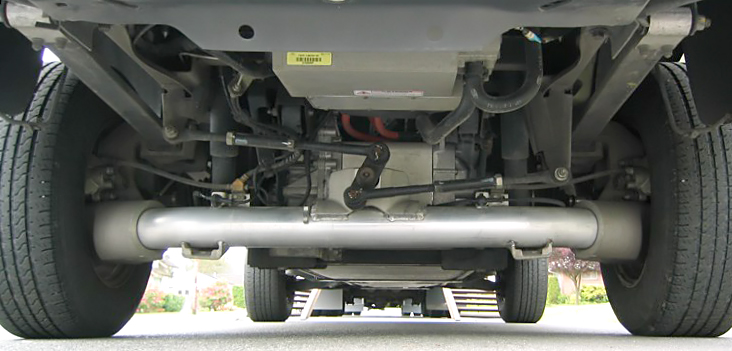
In the 1998 model, carbon fiber leaf springs support a DeDion tube located by a Watt’s linkage, motor/transmission is attached to chassis. Later versions have similar appearance but without the linkage.
Driveline:
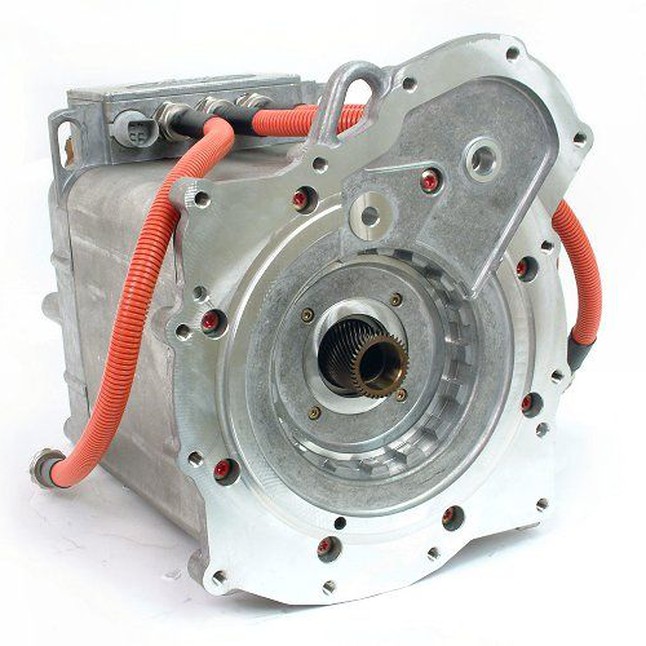
Siemens AC induction motor
The rear wheels are powered by a six pole alternating current motor operating through a (single speed) three to one reduction transmission and differential. The motor can produce 60 hp (45 kW) and can operate at a maximum speed of 13,000 rpm. The motor, transmission, and differential are contained in a single unit mounted high between the frame rails, transversely between the rear wheels. Half shafts angle downward to drive the wheels.
More Photos:
Click the photos to enlarge. Click the arrows to load more.











